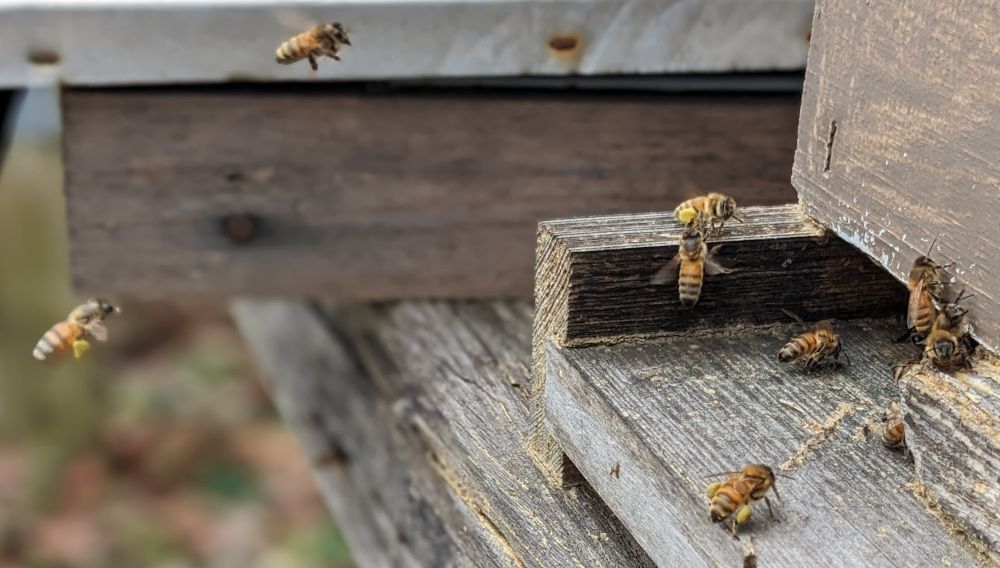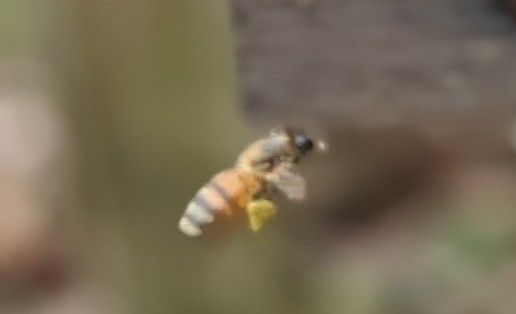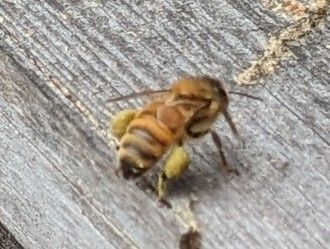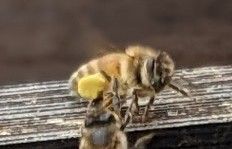Bee Spring
Every February, the early blooming red maple trees kick off a new year for the honey bees—honey bee spring!

Spring for the honey bee arrives with the first significant source of nectar and pollen: red maple tree blooms. Throughout the winter, with a focus on mere survival, honey bees hunker down and live off of their stores of honey. Here in the northern reaches of the North Carolina Piedmont, they bide their time until late January (climate change has moved this earlier in time) to mid-February and the blossoming of the red maple tree. Much like flipping a switch, the arrival of that first pollen sets a whole series of activities in motion within the hive. The pollen is a protein source and signals that it is now time to start boosting the population. The queen starts to lay, and the workers have a means to deliver vital nutrients to the young bees.
When you look at the photos, notice the yellow pollen packed onto their legs as they fly in. That pale yellow is a blob of red maple pollen. All pollens have their own colors.



Other creatures seem to mark this time as something more significant as well. The days are getting longer, birds are turning around in their migration, and our chickens have started laying their eggs once again.
Hello "Spring!"
